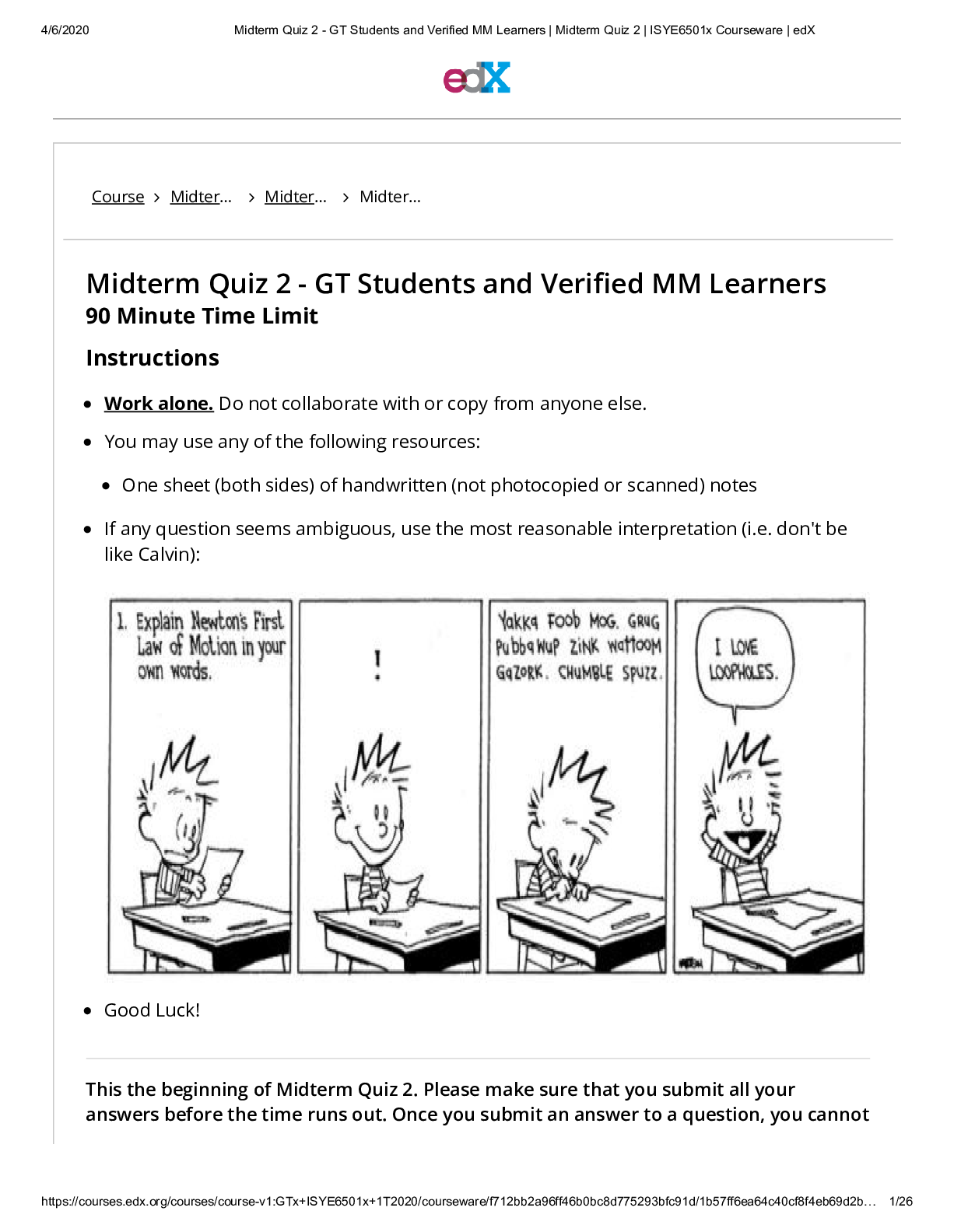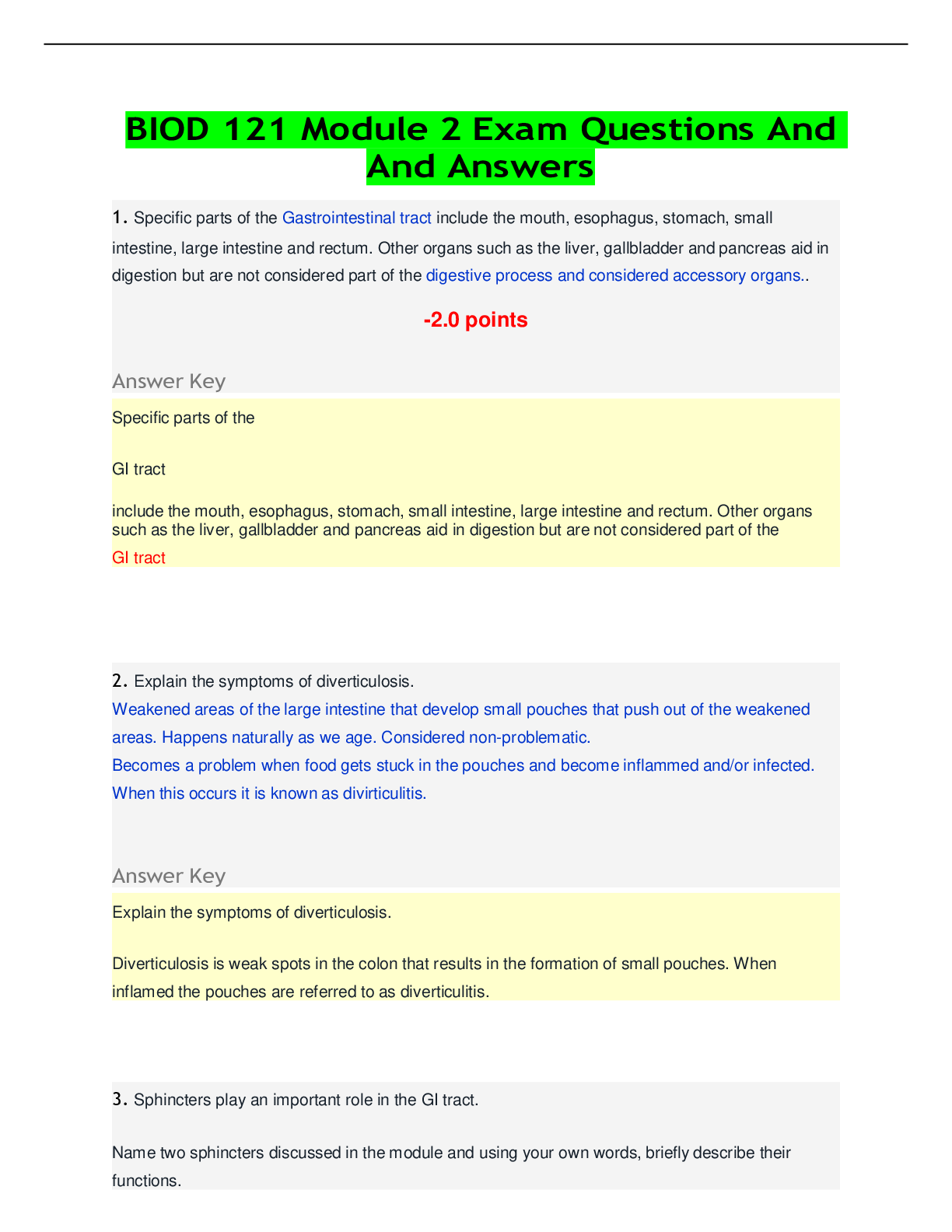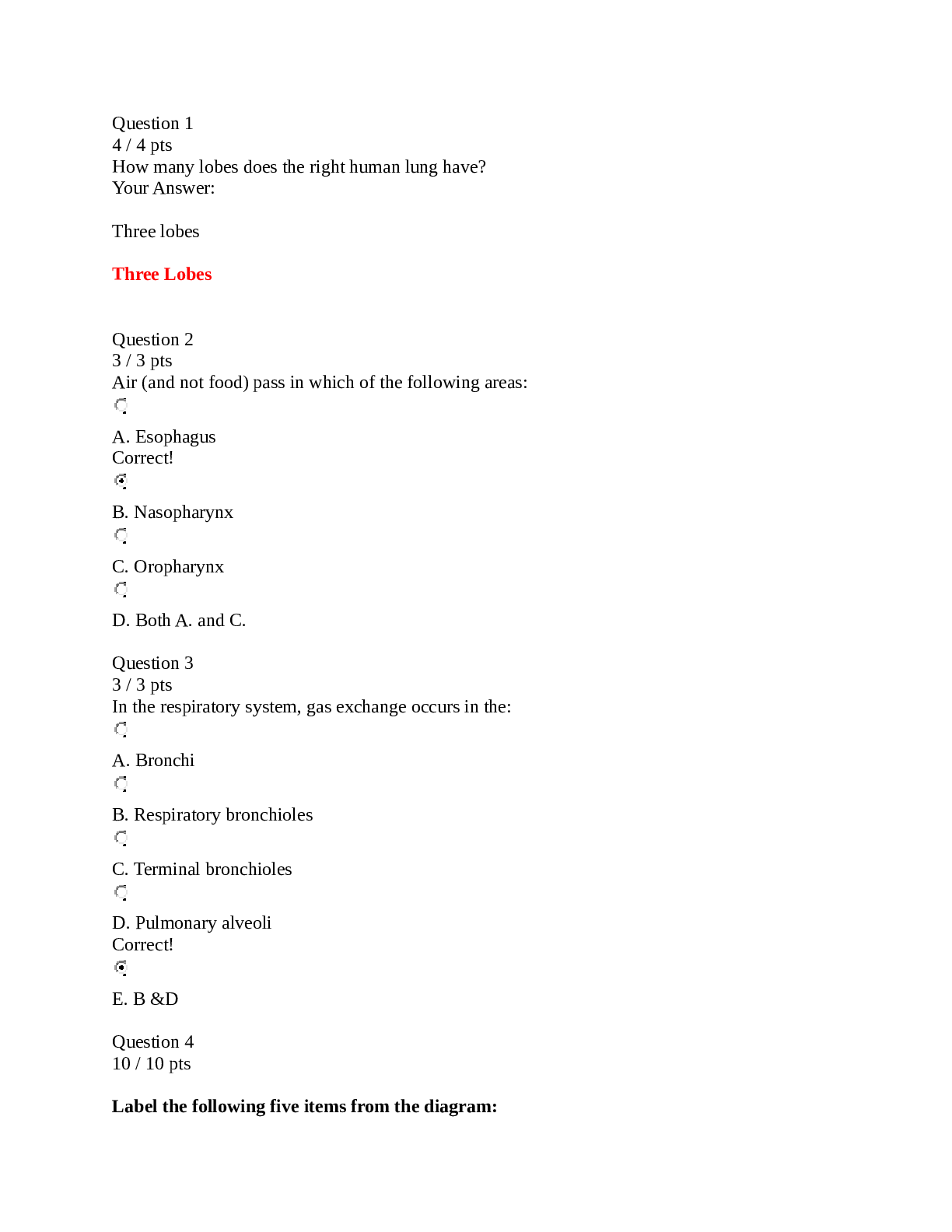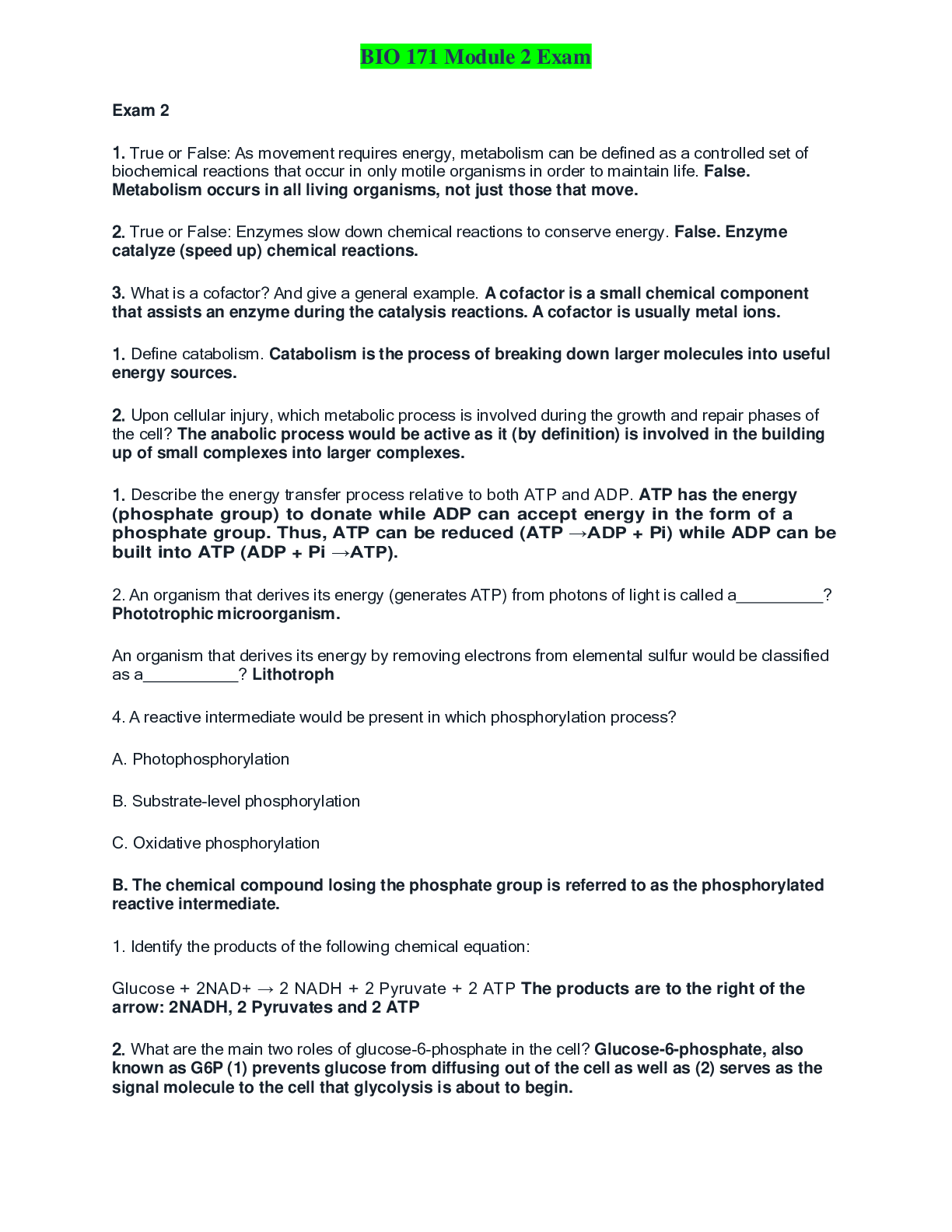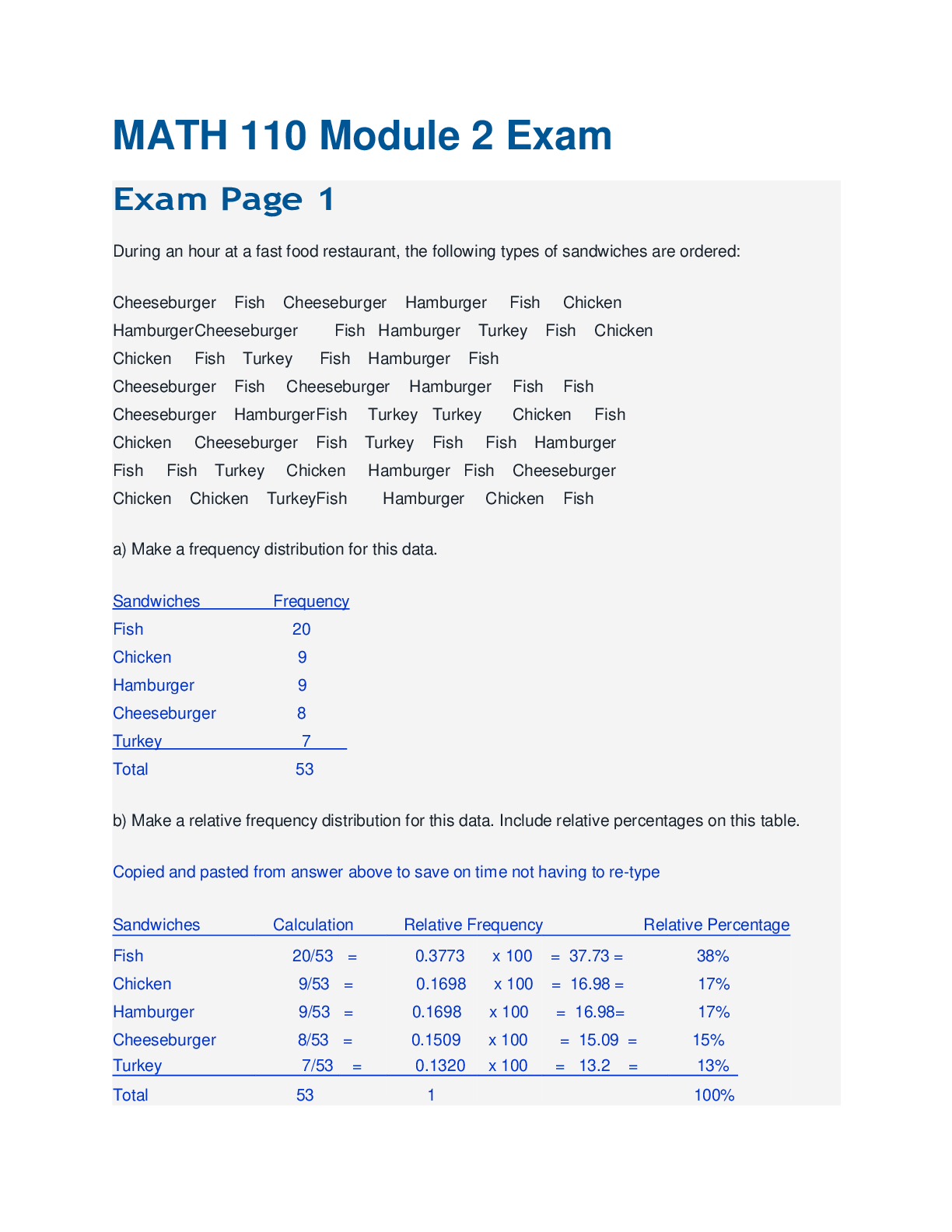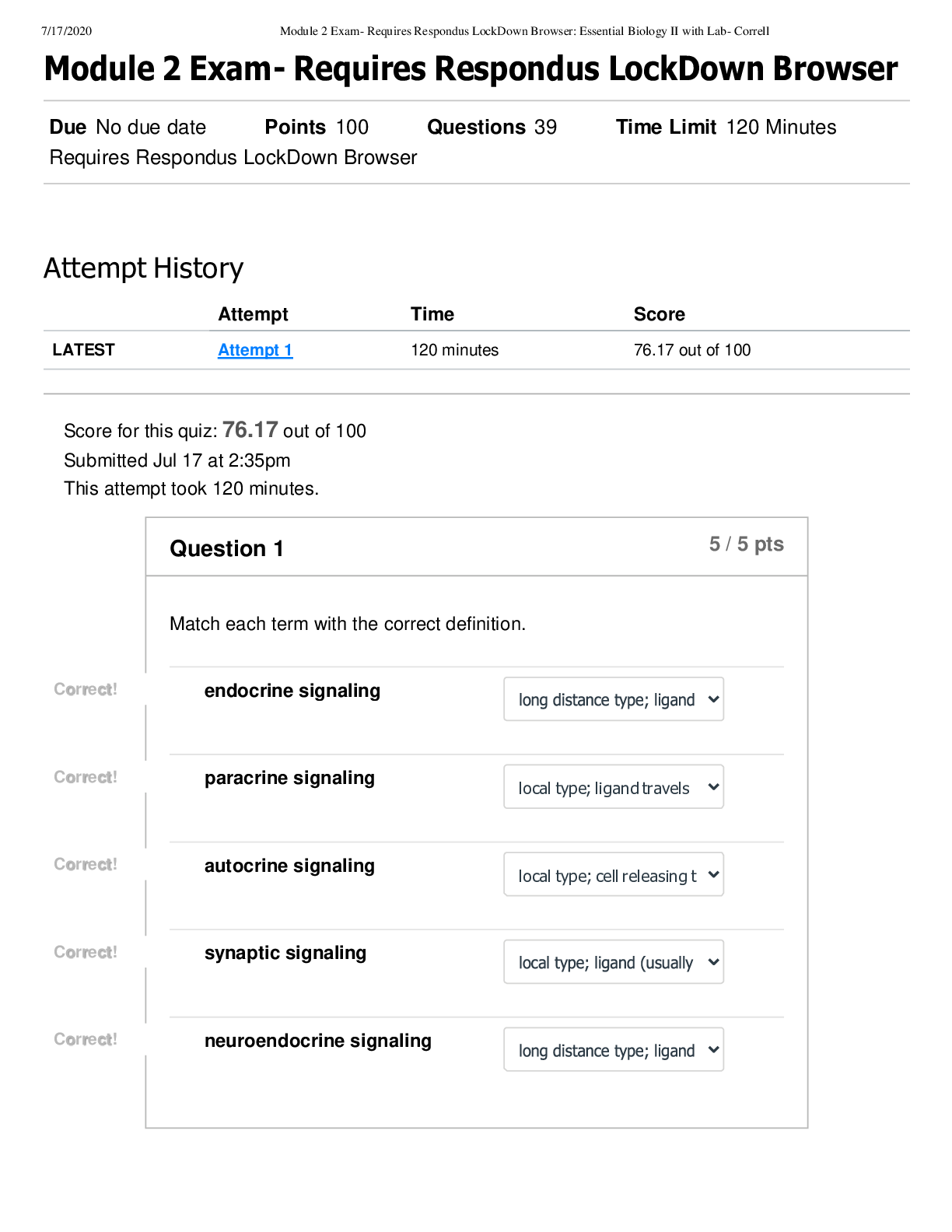Bio 171 Module 2 Exam
Document Content and Description Below
Exam 2 1. True or False: As movement requires energy, metabolism can be defined as a controlled set of biochemical reactions that occur in only motile organisms in order to maintain life. False. Me... tabolism occurs in all living organisms, not just those that move. 2. True or False: Enzymes slow down chemical reactions to conserve energy. False. Enzyme catalyze (speed up) chemical reactions. 3. What is a cofactor? And give a general example. A cofactor is a small chemical component that assists an enzyme during the catalysis reactions. A cofactor is usually metal ions. 1. Define catabolism. Catabolism is the process of breaking down larger molecules into useful energy sources. 2. Upon cellular injury, which metabolic process is involved during the growth and repair phases of the cell? The anabolic process would be active as it (by definition) is involved in the building up of small complexes into larger complexes. 1. Describe the energy transfer process relative to both ATP and ADP. ATP has the energy (phosphate group) to donate while ADP can accept energy in the form of a phosphate group. Thus, ATP can be reduced (ATP →ADP + Pi) while ADP can be built into ATP (ADP + Pi →ATP). 2. An organism that derives its energy (generates ATP) from photons of light is called a _________? Phototrophic microorganism. An organism that derives its energy by removing electrons from elemental sulfur would be classified as a __________? Lithotroph 4. A reactive intermediate would be present in which phosphorylation process? A. Photophosphorylation B. Substrate-level phosphorylation C. Oxidative phosphorylation B. The chemical compound losing the phosphate group is referred to as the phosphorylated reactive intermediate. 1. Identify the products of the following chemical equation: Glucose + 2NAD+ → 2 NADH + 2 Pyruvate + 2 ATP The products are to the right of the arrow: 2NADH, 2 Pyruvates and 2 ATP 2. What are the main two roles of glucose-6-phosphate in the cell? Glucose-6-phosphate, also known as G6P (1) prevents glucose from diffusing out of the cell as well as (2) serves as the signal molecule to the cell that glycolysis is about to begin [Show More]
Last updated: 1 year ago
Preview 1 out of 4 pages
Instant download
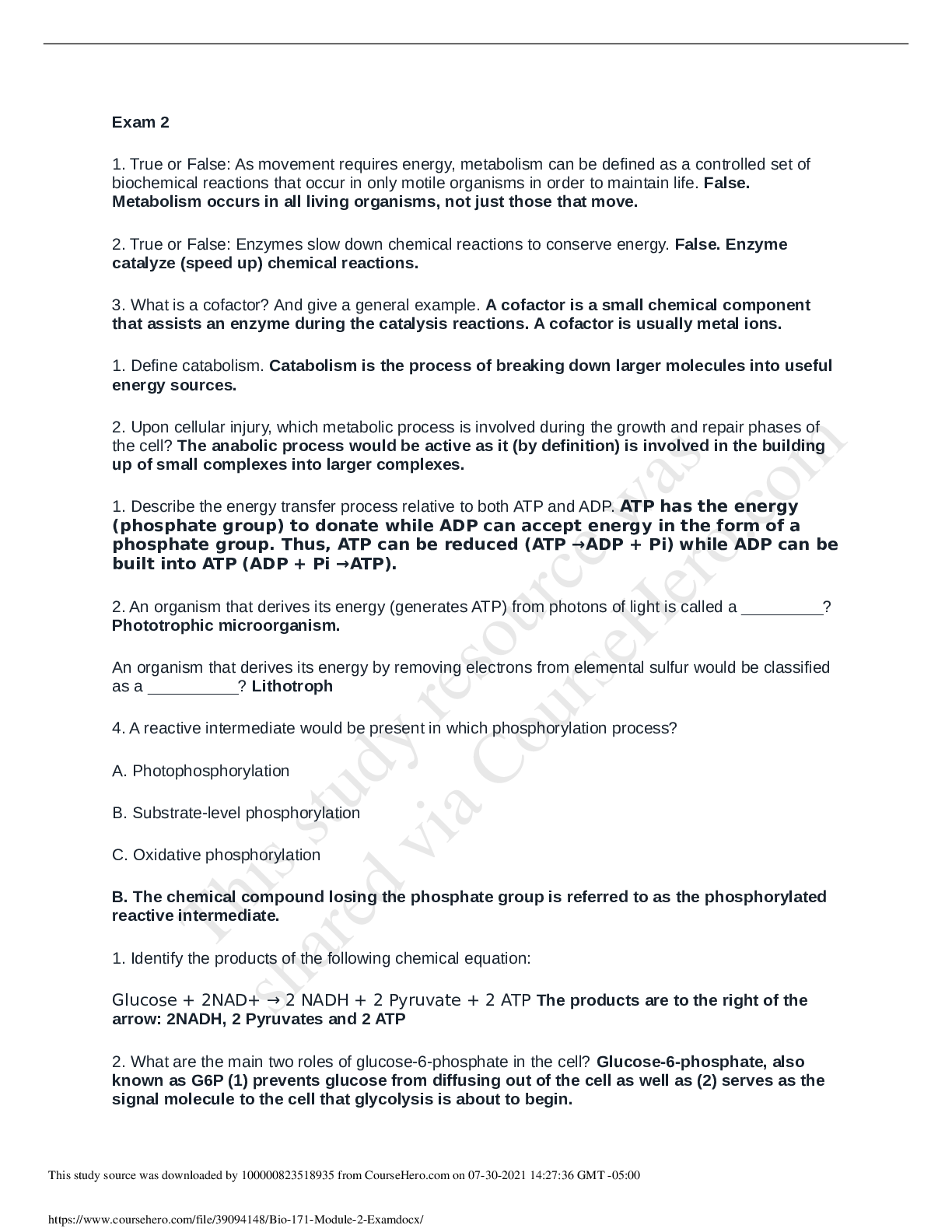
Buy this document to get the full access instantly
Instant Download Access after purchase
Add to cartInstant download
Reviews( 0 )
Document information
Connected school, study & course
About the document
Uploaded On
Jul 30, 2021
Number of pages
4
Written in
Additional information
This document has been written for:
Uploaded
Jul 30, 2021
Downloads
0
Views
43

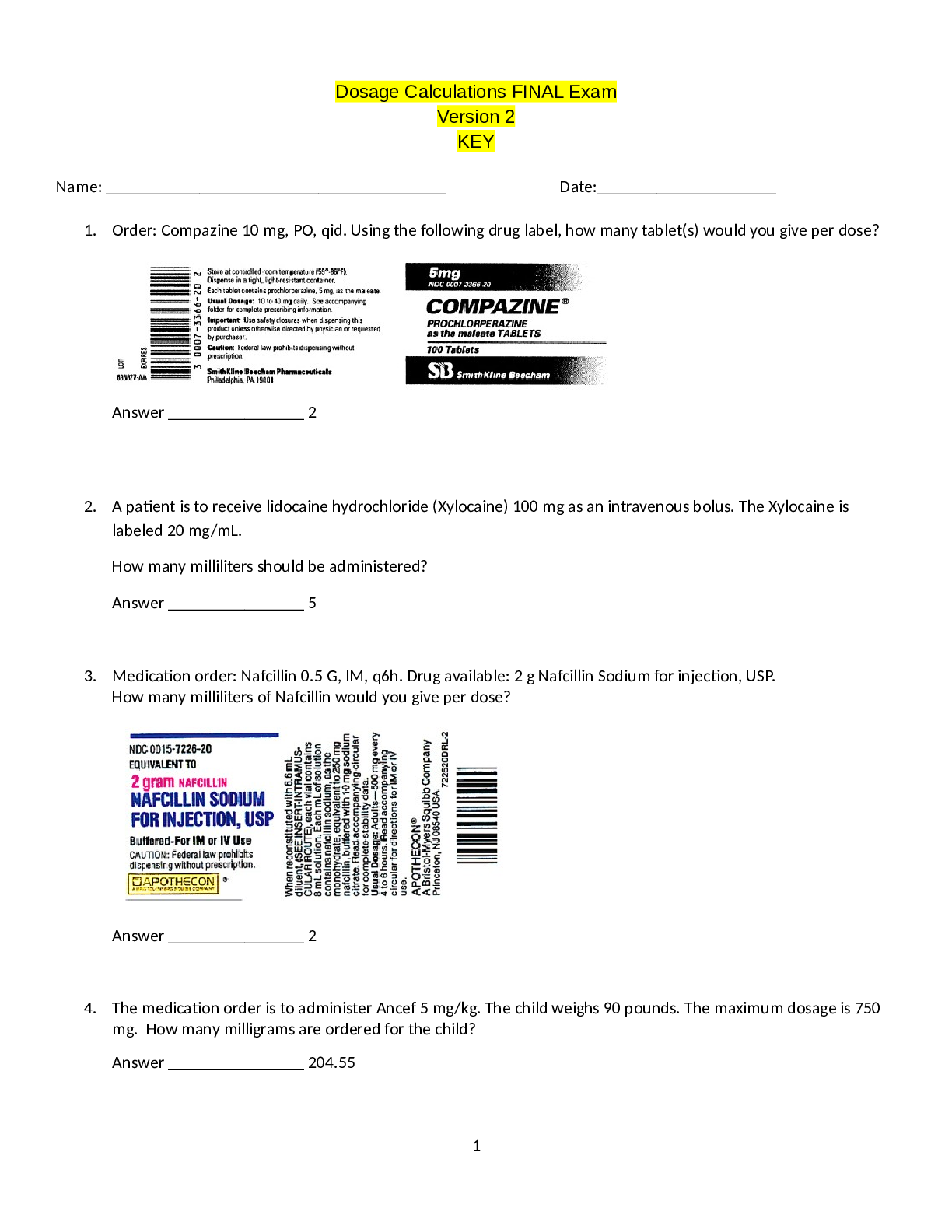


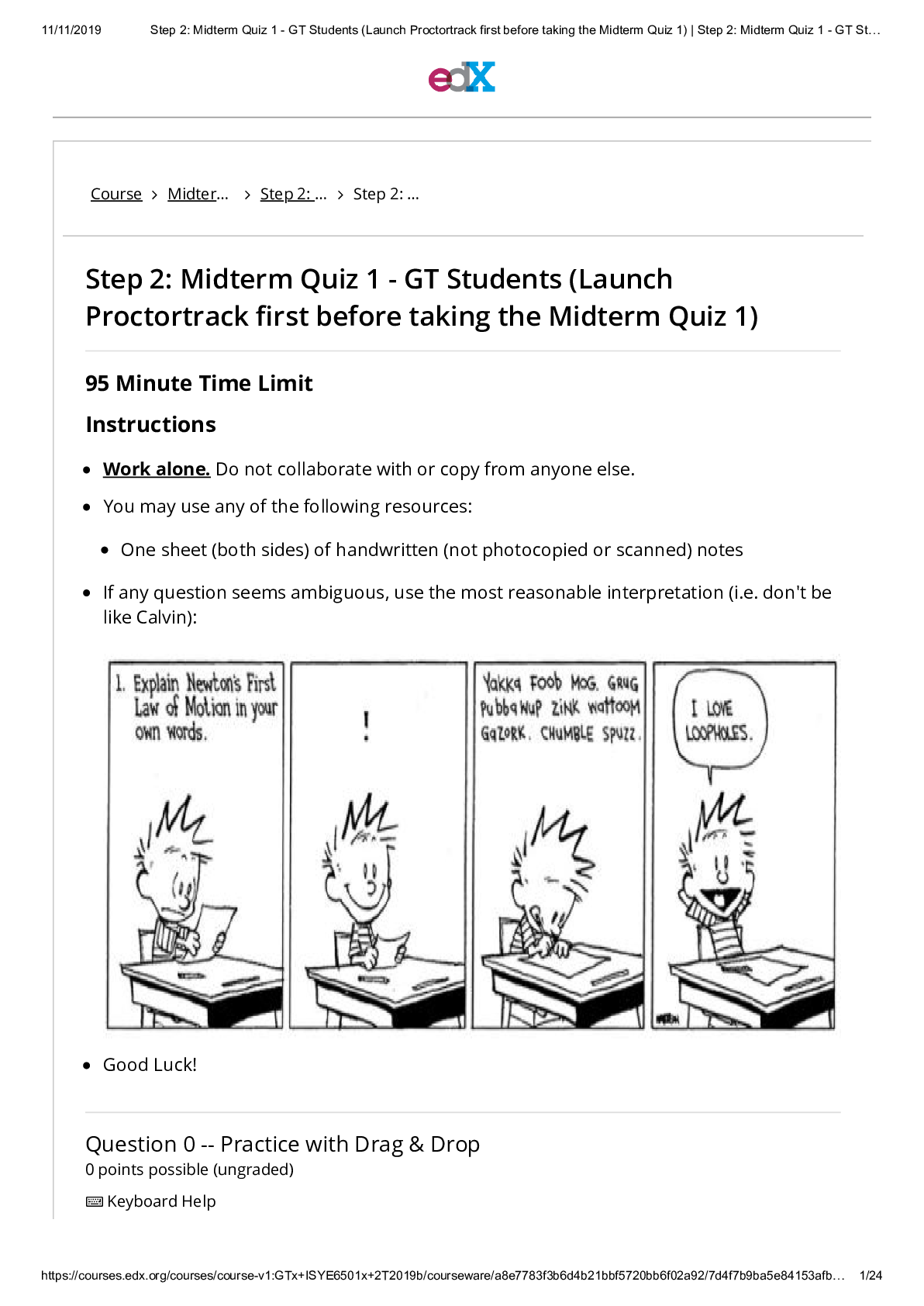

.png)
